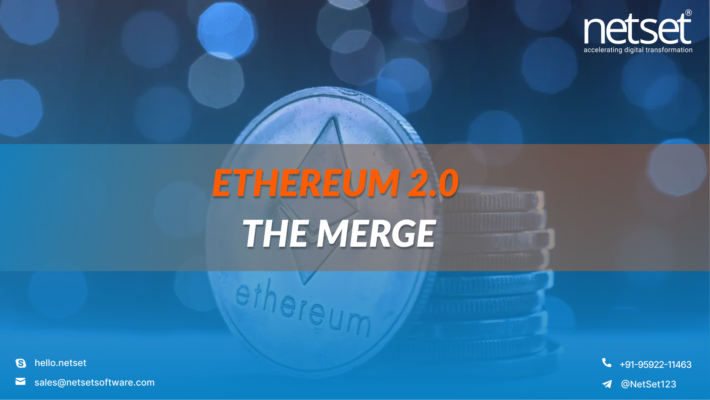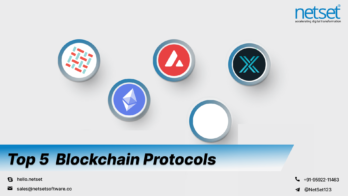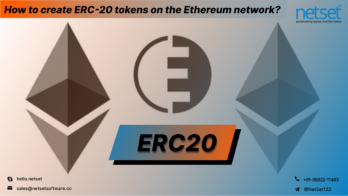An Update on Ethereum’s Transition to Proof of Stake in 2022: The second-largest cryptocurrency by volume and most widely used altcoin, Ethereum, is preparing a significant software update that may have an impact on your cryptocurrency investments.
After dominating the smart contract blockchain market for many years, Ethereum is making the switch to a less power-intensive technology. The Ethereum foundation now refers to the anticipated improvements as Ethereum Merge instead of Ethereum 2.0 or Eth2.
It might be happening sooner than predicted after multiple delays. In order to execute its full software update later this summer, Ethereum finished a test merge.
Experts in the field are closely monitoring each development leading up to the update because they believe it might materially change how much the second-largest cryptocurrency is worth.
According to some analysts, there will be benefits for Ethereum investors as a result of the recent announcement by Ethereum co-founder Vitalik Buterin. That the primary network will switch from proof-of-work to proof-of-stake in August “if there are no complications.”
Proof-of-Stake Vs. Proof-of-work: Ethereum’s Transition
Despite being a relatively new technology, the ideal way for blockchains to verify transactions and add them to the blockchain is still up for debate. There are cryptocurrencies that use both proofs of work and proof of stake, and the two are up for discussion.
Ethereum’s Transition Proof of Work
In a proof-of-work system, nodes compete for the right to validate data by attempting to crack challenging mathematical riddles. Because of this, a lot of computational power needed.
The benefits of proof of work include dependability and security. The complexity of the mathematical calculations required to attain verification makes manipulating the system all but impossible.
The main drawbacks of proof of work are its slowness, expensive expenses, and excessive energy consumption.
As an illustration, Bitcoin consumes roughly the same amount of energy per year as a nation the size of Sweden. The scalability of the proof-of-work system constrained by the price of powerful computer systems and their maintenance of them.
Last but not least, the complete transaction process is not at all the fastest in the sector. Seven transactions processed by Bitcoin every second. By contrast, blockchains utilizing alternative consensus algorithms use thousands.
The Ethereum’s Transition Proof of Stake
Using a proof of stake eliminates the need for intricate calculations. So, in terms of energy efficiency, it outperforms proof of work. Instead, individuals who own the largest amount of the network’s native currency given the authority to validate transactions.
According to the theory, those who have a stake in the system are less inclined to try to influence it. And if they do, their stake may removed.
The proof-of-stake mechanism is simpler for investors to engage in than the proof-of-work system. This is due to the lack of technical expertise and advanced computer systems.
You don’t even need to establish stakes on your own, in fact. Stake pools handled by exchanges. That implies that you can contribute some of your assets to a pool and receive incentives as a result.
When it comes to speed, proof of stake is superior to evidence of work. For instance, as a proof-of-work blockchain, Ethereum can only handle 30 transactions per second. Once it switches to proof of stake and launches its shard chains, the network anticipates processing up to 100,000 transactions per second.
What is Ethereum Merge?
The Merge is the union between Ethereum’s new Beacon Chain proof-of-stake consensus layer with its current execution layer (the Mainnet that we currently utilize).
Instead of using energy-intensive mining, it uses staked ETH to safeguard the network. An incredibly exciting step toward achieving the more scalability, security, and sustainability goals of Ethereum.
It’s vital to keep in mind that the Beacon Chain first shipped apart from Mainnet. While the Beacon Chain operates concurrently with proof-of-stake, the Ethereum Mainnet, with all of its accounts, balances, smart contracts, and blockchain information, continues to be secure by proof-of-work.
When these two systems eventually converge at the next Merge, proof-of-stake will completely replace proof-of-work.
Why Merge? Why Now?
Because the currently operational beacon chain will combine with the current Ethereum mainnet chain, the switch from PoW to PoS known as “the Merge.”
The network’s history and operation preserved, but critically, the consensus method altered. Through network validators, who will employ financial incentives to safeguard the blockchain, the beacon chain will coordinate information and the creation of new blocks (more info can be found here).
Fundamentally, the switch to PoS lowers network energy consumption by at least 99.95%! The ecosystem is aware that we must improve because at this time, the network has almost the same carbon footprint as the entire country of Finland. Additionally, The Merge will alleviate:
- While Proof of Work consensus algorithm cannot be long-term supported or scaled.
- Proof of Stake makes network participation more accessible to many more people rather than just big miners.
- Despite a decreased ETH issuance rate and smaller block rewards, there should be a more equitable distribution of network rewards to encourage positive behaviors and make yield accessible to a large number of users.
What are the stages of the Ethereum upgrade?
Phase 0
The Beacon Chain is a new feature introduced in Phase 0 of the Ethereum 2.0 upgrade. The Beacon Chain, which goes Pops on December 1, 2020, allows users to stake (lock away) their Ethereum and become validators. However, because the Beacon Chain coexists with Ethereum’s Mainnet, Phase 0 has no impact on the main Ethereum blockchain.
The Mainnet and Beacon chain will eventually be connect, though. The goal is to “merge” Mainnet into the coordinated and controlled proof-of-stake system of the Beacon Chain.
Furthermore, by staking 32 ETH, prospective validators can still indicate their interest in the Beacon Chain. It’s a lot to ask users to stake when you realize that 32 ETH represents thousands of dollars worth of Ethereum.
Staked funds will likewise be kept for at least two years before being released once Ethereum 2.0 is completely ready for use. The stringent entrance requirements reflect the expectation that early validators will be deeply dedicated to the project’s future.
Phase 1
Phase 1 was suppose to open in the middle of 2021, but developers delayed it to the beginning of 2022, citing incomplete work and code auditing as major factors. The Beacon Chain and the mainnet merged in the following phase, which will officially implement a PoS consensus process.
Starting with Phase 1, Eth2 will store the complete transaction history of Ethereum and implement smart contracts on the PoS network. Stakers and validators will formally enter the fray once mining removed from the Ethereum 2.0 network. Many miners anticipated to stake their shares in order to become validators.
When Ethereum 2.0 was first developed, shading was intended to be introduce in Phase 1. A database, or in this example, the blockchain, shaded when it is divide up into numerous smaller chains known as shards.
The network’s load will be distribute across 64 additional chains due to Eth2’s 64 shards. Shards simplify node operation by reducing hardware demands. After the Mainnet and the Beacon Chain have combined, this upgrade will take place.
Validators and other users can operate their own shards on Ethereum 2.0, validating transactions and preventing too much congestion on the mainchain.
In order for shared networks to enter the Ethereum ecosystem securely, a proof-of-stake consensus algorithm needed. On the Beacon Chain, staking will be implement in order to set the stage for the upcoming update to the shard chain.
Phase 2
Finally, Ethereum WebAssembly, or eWASM, will debut during Phase 2. The World Wide Web Consortium developed WebAssembly with the goal of dramatically increasing Ethereum’s efficiency.
For the Ethereum smart contract execution layer, Ethereum WebAssembly is a suggested deterministic subset of WebAssembly.
Currently, Ethereum has an EVM, also known as an Ethereum Virtual Machine. Ethereum can function as a global supercomputer thanks to an EVM. Users can engage with decentralized applications and run smart contracts on this machine from anywhere in the world (DApps).
The Ethereum Virtual Machine (EVM) facilitates wallet addresses for transactions, calculates transaction (gas) fees for each transaction, and contains all of the code required to carry out commands on Ethereum.
EVM can support multiple actions simultaneously, such as determining whether a smart contract needs to be terminate because it consumes too much gas, whether a DApp is deterministic. Because it always executes the same inputs and outputs, or whether a smart contract is isolated because its error won’t affect the larger Ethereum network.
However, there is a bit too much activity on the Ethereum network right now. The EVM is working far more slowly than it supposed to since multiple Ethereum’s Transition are happening at once.
The EVM for Ethereum is especially challenging to update because it was create using the specialized, challenging-to-understand Solidity programming language. It would be replace by the eWASM, which would be put into use in Phase 2.
The eWASM compiles code considerably more quickly than the EVM, accelerating network processes. The eWASM makes gas operate more effectively, and it is compatible with many classical coding languages, including C and C++. In essence. The eWASM aims to greatly increase accessibility to Ethereum development.
After the Ethereum merge, What will happen?
Shading is a subsequent procedure that will begin after the Merge. This is essentially a procedure that will assist the network to become ready for Ethereum 2.0’s Shard chains, which will entirely depend on a working PoS network to function.
These shard chains will offer additional, more affordable layers for apps and rollups to store data by distributing the network workload among 64 blockchains. They also make it possible for layer 2 systems to provide minimal transaction fees while gaining the advantages of the Ethereum mainnet’s security.
What Does Ethereum’s Future Hold?
The upgrade will probably result in a reduction in the supply of new ETH, and depending on how much ETH is available for the stake, demand in the Ethereum blockchain may rise.
According to Christine Kim, a research analyst at Galaxy Digital, who spoke on FirstMover, the fall in supply is favorable for the majority of Ethereum investors. “Supply should decrease over time rather than increase.” Therefore, I believe it gives Ethereum’s investment case for being a store of value and a hedge against inflation a major boost,” Kim said.
Investors in DeFi seem eager for the merger to be finish. According to recent reports, the new Ethereum Consensus Model staking mechanism has at least $31 billion worth of ETH invested. Ready to validate brand-new transactions as soon as the signal green.
High-profile crypto experts are forecasting an ETH bull run to as high as $10,000 in 2022, and billionaire Mark Cuban has reportedly expressed optimism about the impending merger of Ethereum.
The indicators are all in place for the Ethereum blockchain. To continue to be the dominant smart contract network and possibly overtake Bitcoin as the market leader. But there is still a lot of work to be done by Ethereum’s developers before then.
Conclusion
You studied the “Merge” of Ethereum:
- Impact the cryptocurrency market and its investors.
- Ethereum Network will advance.
- Merge will affect demand.
- Impact the future of the Ethereum Network in this tutorial.
Choose NetSet Software will assist you with all levels of experience and understanding to learn more about cryptocurrencies, Blockchain, and its upcoming projects and technology.
Whether you are an experienced Blockchain expert or just aspiring to break into this exciting industry. Just a consistent investor in cryptocurrencies, Choose NetSet will help you.



